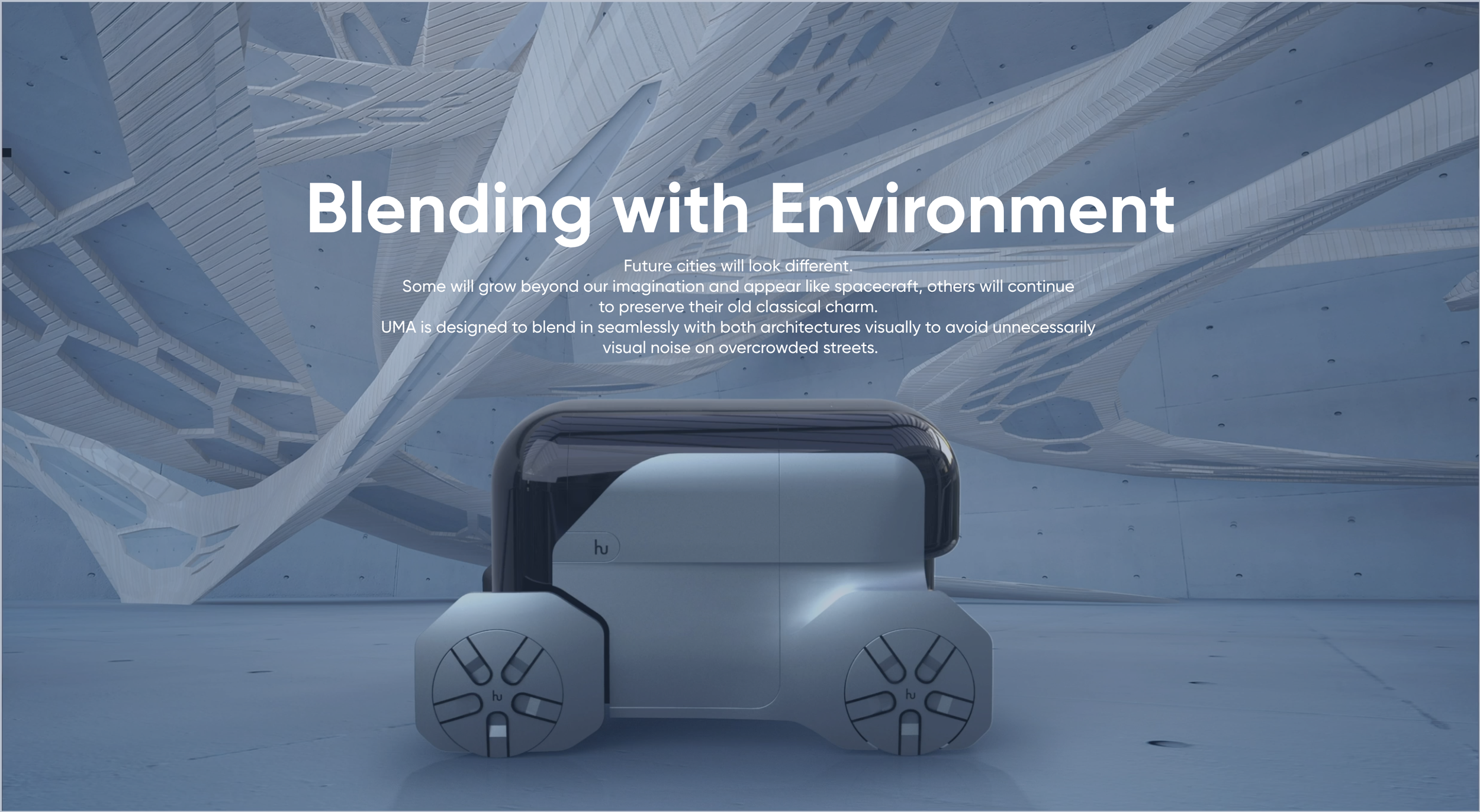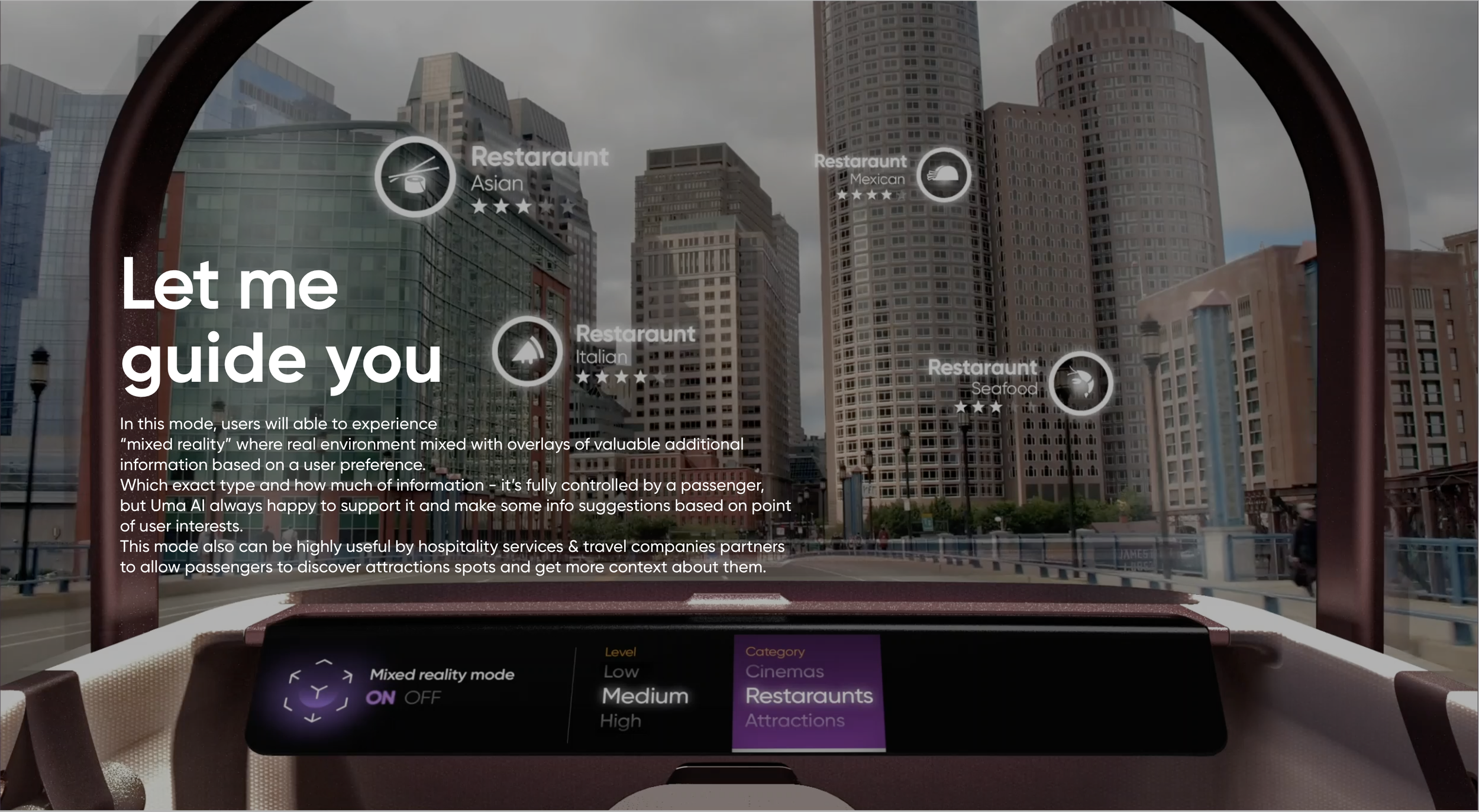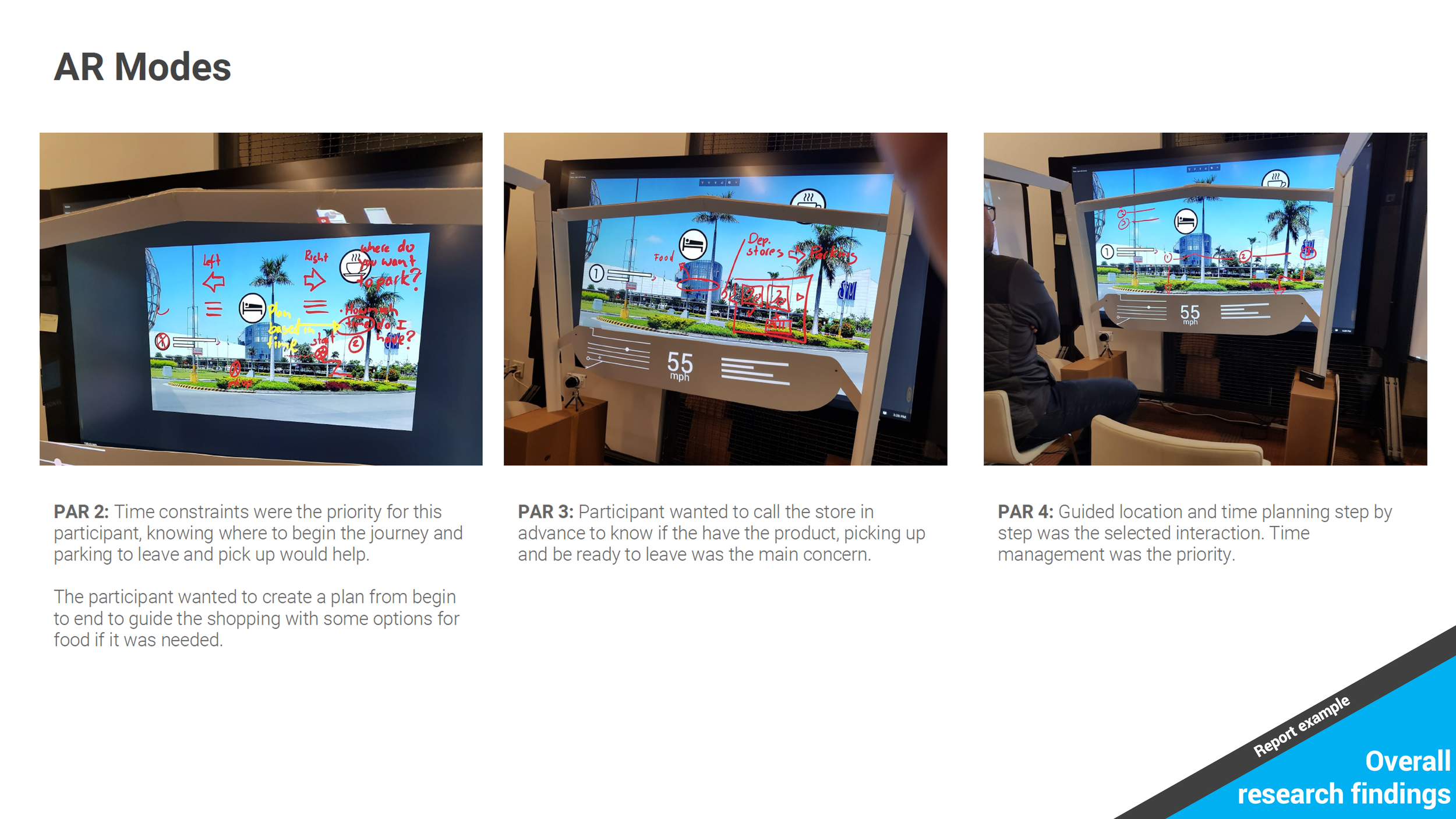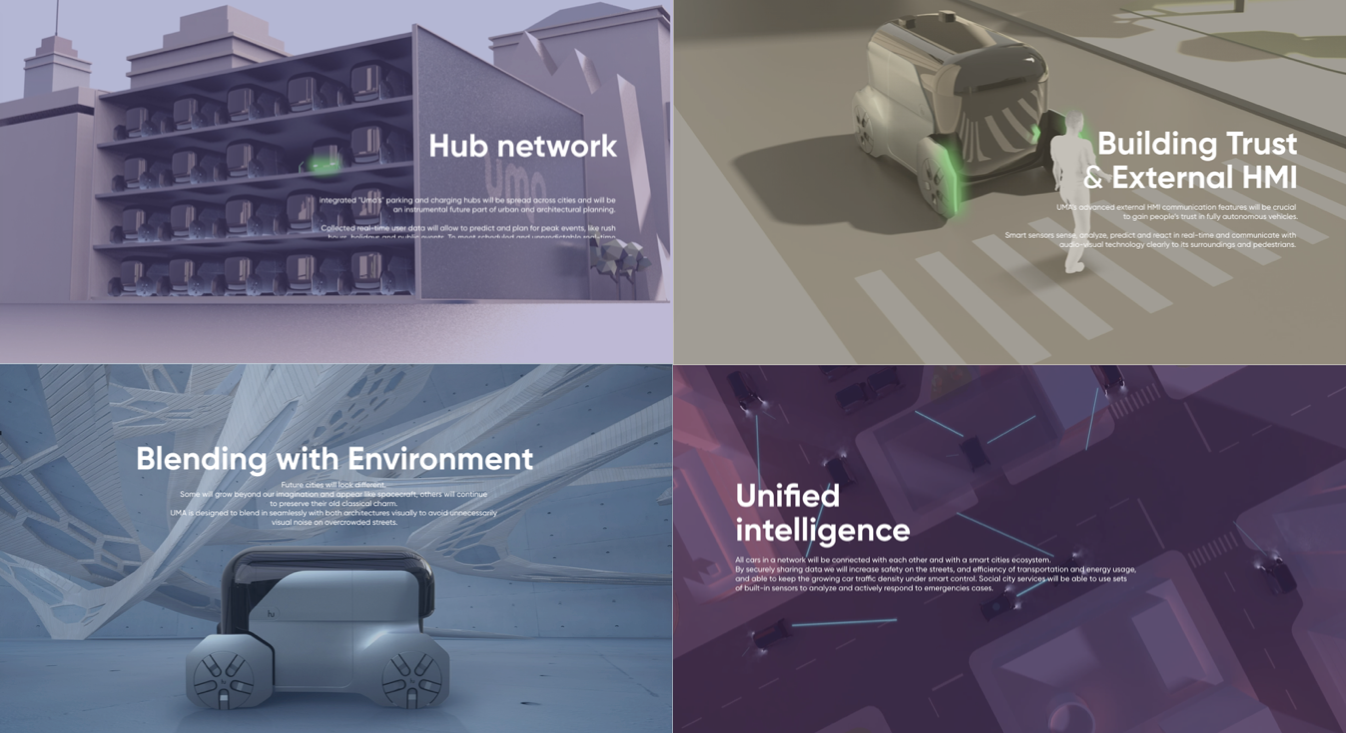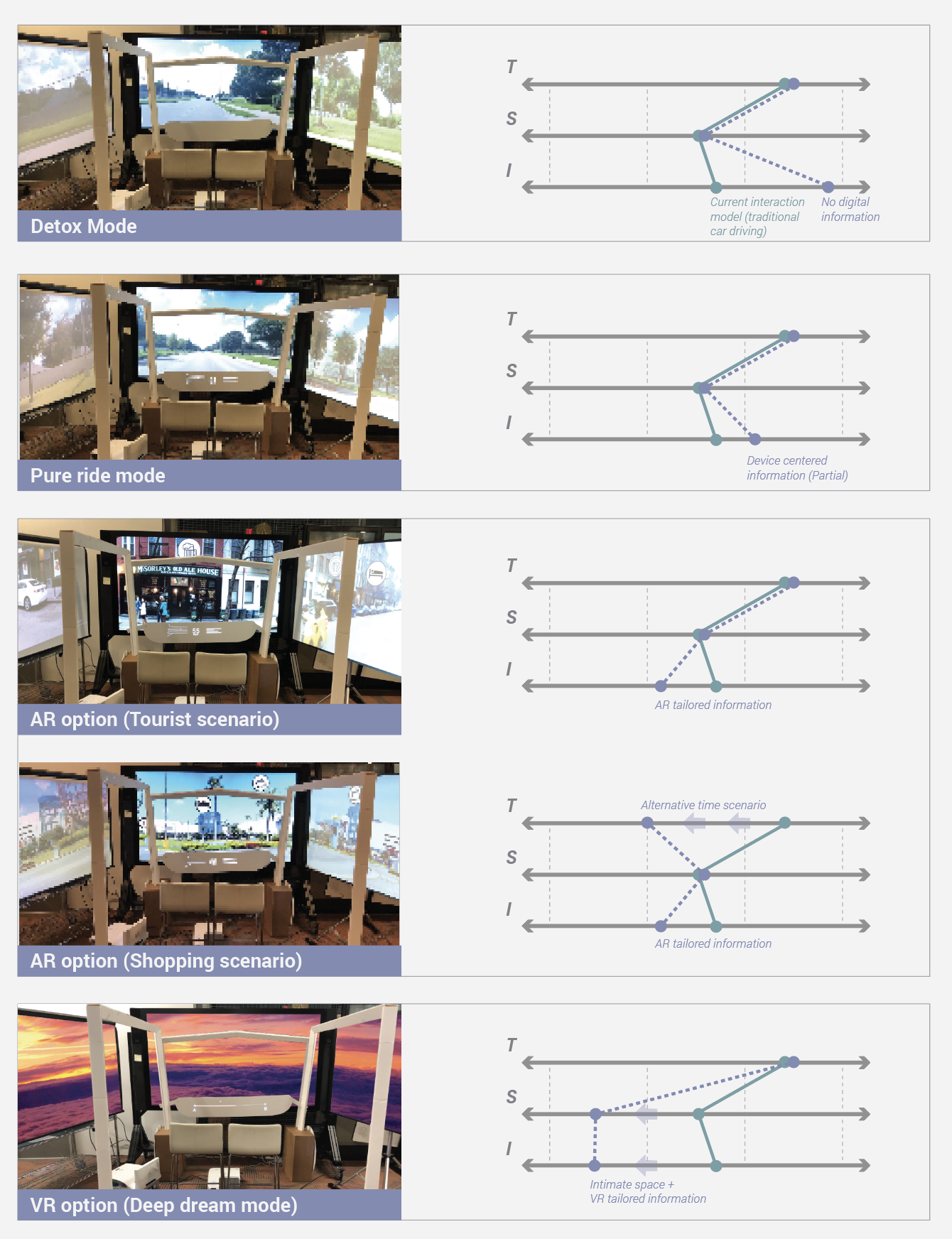Autonomous Mobility 2030: From Industry Exploration to Doctoral Research
Building a Lab from Nothing to Bridge Industry Innovation and Academic Rigor
Company: Harman International (Huemen Design Group)
Role: Senior UX Researcher & PhD Candidate
Recognition: Fast Company World-Changing Ideas Award 2020 (Honorable Mention, Transportation) | Presented at CES
The Opportunity
As a new researcher at Harman International—a major supplier to luxury automotive manufacturers—I was invited to an unusual meeting. Senior leadership needed to envision autonomous vehicle experiences for their annual CES showcase, but this initiative had no budget, no team, and no formal structure. As an internal consultant whose time was 100% billable to clients, any contribution would be entirely on my own time.
The initial scope was straightforward: secondary research on technology trends. But I recognized a limitation—we weren't uncovering anything surprising. What we needed was primary research, but stakeholders couldn't envision how to collect data from sketches and illustrations still in development.
During a meeting at the company's design headquarters with the VP—a renowned, award-winning designer—I proposed building a low-fidelity prototype to collect user feedback. His candor was refreshing: in most projects, designers know the direction from the outset, and research builds client confidence. But autonomous vehicle experiences exceeded his expertise in premium audio systems.
His response: "If you know what you are doing, go ahead."
My strategic decision: Use the same experimental lab to serve both rapid industry insights and rigorous doctoral research—demonstrating that research in industry and academia can exist in productive synergy.
The Challenge
With projected 40% autonomous vehicle market penetration by 2030, a critical behavioral question emerged: How would fully autonomous transportation affect physical activity and health?
Dual research objectives:
- Industry: Envision human-centered 2030 autonomous experiences for CES presentation
- Academic: Study how spatial interaction design (proxemics) influences motivation for long-term behavior change
Research question: Could autonomous vehicles facilitate positive health behaviors, or would they accelerate sedentarism?
Building the Lab: Execution with No Resources
Returning from that meeting, I had significant responsibility but no budget and no time allocation. What I did have was clarity about methodology and confidence in combining industrial design training with doctoral research methods.
I used "smoke and mirrors" prototyping—creating experiences that feel real without building actual technology. Using foam board, projectors, screens, speakers, and cameras, I built an immersive autonomous vehicle interior simulation. After securing space and recruiting diverse participants from within the office, results were ready within a couple of weeks—from initial meeting to lab construction to complete data collection.
The response exceeded expectations. The industrial designer leading project execution read every participant quote, expressing surprise at insights that challenged the team's assumptions. Colleagues were amazed that such comprehensive research emerged without formal budget or allocated time—just methodological clarity and execution.
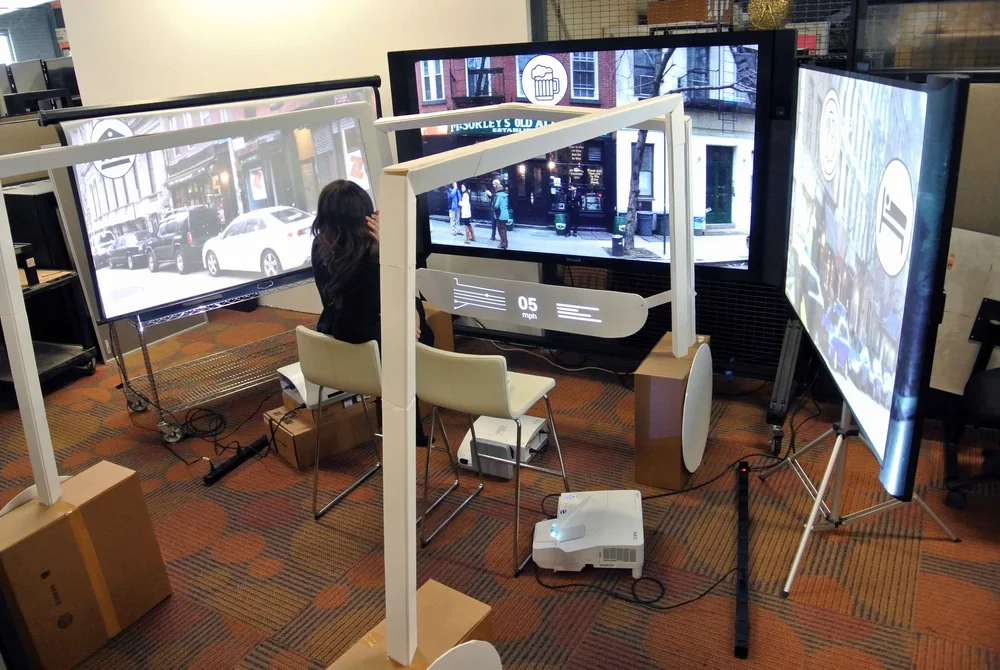
The Approach: Dual Research Design
Stage 1: UMA (Urban Mobility Assistant) - Industry Exploration
Created five interaction modes using structured provotyping to explore the transition from current driving culture to fully autonomous experiences:
- Detox Mode - No data displayed, challenging car culture expectations
- Pure Ride Mode - Minimal info: speed, ETA only
- AR Tourist Mode - Contextual exploration with suggestions
- AR Shopping Mode - Goal-oriented efficiency with social sharing
- VR Deep Dream Mode - Full immersion for relaxation
Method: Low-fidelity prototype with semi-structured interviews, qualitative grounded theory analysis

Stage 2: Controlled Mixed Methods Experiment (Doctoral Research)
Research question: How does spatial interaction design influence motivation for behavior change?
Experimental design:
- Independent variable: Proxemics manipulated through three prototypes
- Prototype A: Personal/Intimate - Individual phone screens, private decisions
- Prototype B: Group/Social - Collaborative touchscreen, shared decisions
- Prototype C: Public - Immersive screens + voice control, collective decisions
- Dependent variables: Self-Determination Theory regulations (intrinsic vs. extrinsic motivation)
- Scenario: Rideshare exercise commitment (more exercise = faster arrival)
- Method: Repeated measures ANOVA + semi-structured interviews (n=8)

The Results: Statistical Significance + Key Insights
Quantitative Finding: Personal Interaction Reduces External Regulation
Participants felt significantly less externally regulated (motivated by rewards/punishments) in the personal/intimate condition compared to social condition.
- External Regulation ANOVA: F(2,7) = 6.30, p = .01
- Personal vs. Social: p = .03 (statistically significant)
- Personal vs. Public: p = .16 (trending)
Interpretation: Private interactions increased perceived autonomy and shifted motivation toward more self-determined engagement—critical for long-term behavior change sustainability.

Qualitative Insights: Four Key Themes
1. Transition Design Required for Technology Adoption
Participants felt anxiety without information access, even in fully autonomous scenarios. Current driver culture creates expectations that new technology must acknowledge.
"Does not like not being able to see information. Wants to know what is going on." (PAR 6, Detox Mode)
Insight: Provotyping reveals what people need to transition from current paradigm, not what they'll ultimately need once fully adopted—similar to early iPhone skeuomorphism.
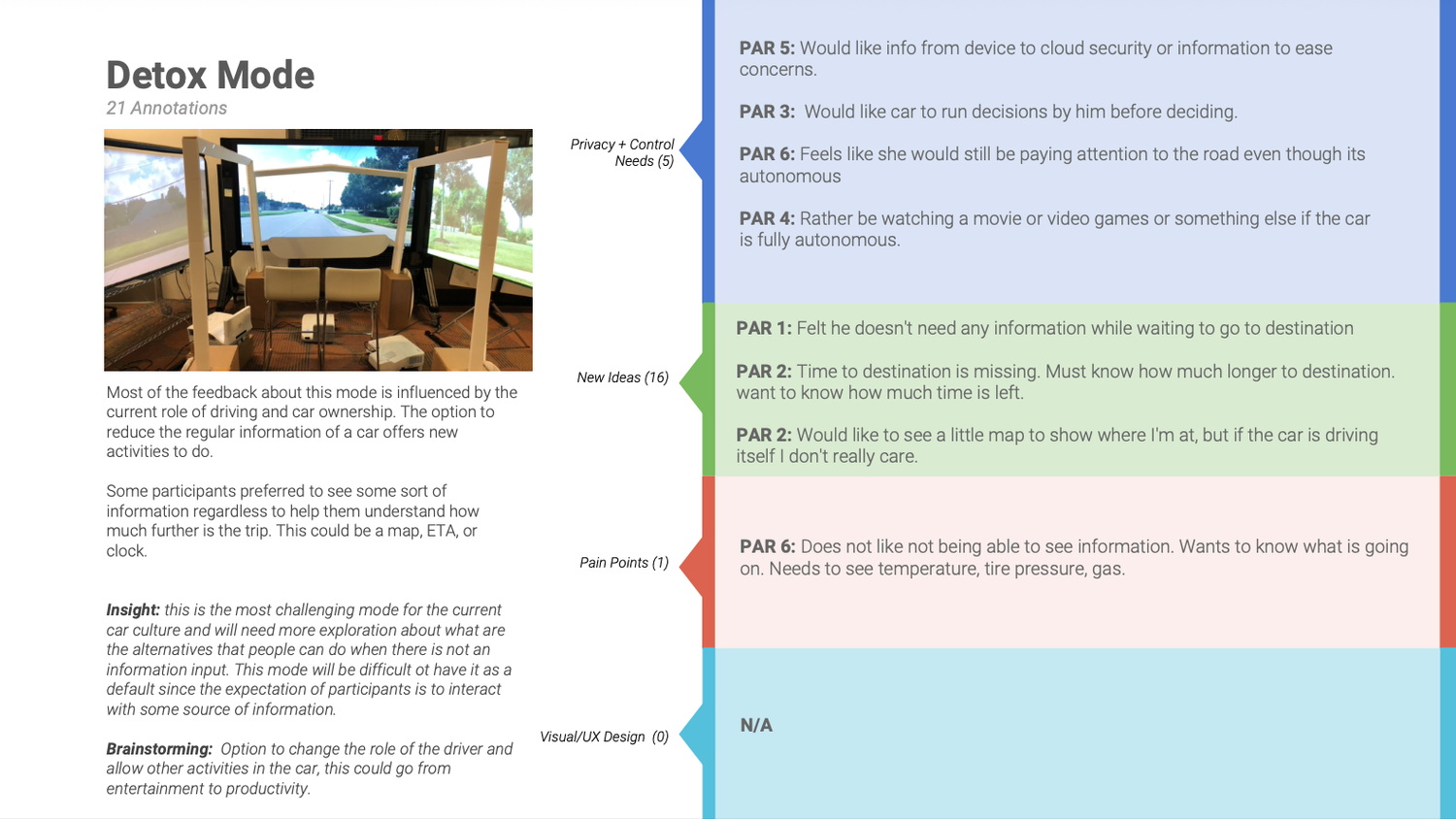
2. Control Dynamics in Voice Interaction
Voice interaction created authority dynamics that reduced individual engagement in group settings.
Finding: In public/voice condition, tone became resource for control, potentially decreasing long-term motivation. Question emerged: "Who is in charge of voice interaction during group dynamics?"
3. Efficiency Dominates Over Emotional Connection
Despite emotional design framing, participants prioritized time management and multitasking.
"Time management is the most valuable thing for her. 'A car that helps me use my time is a really good thing.'" (PAR 2)
Insight: Even when freed from driving, efficiency remains dominant value—challenging initial emotional design assumptions.
4. Data Privacy in Shared Autonomous Vehicles
Participants appreciated personalization but feared residual data in non-owned vehicles.
Insight: Transparency about data deletion after ride ends is critical for shared autonomous vehicle acceptance.
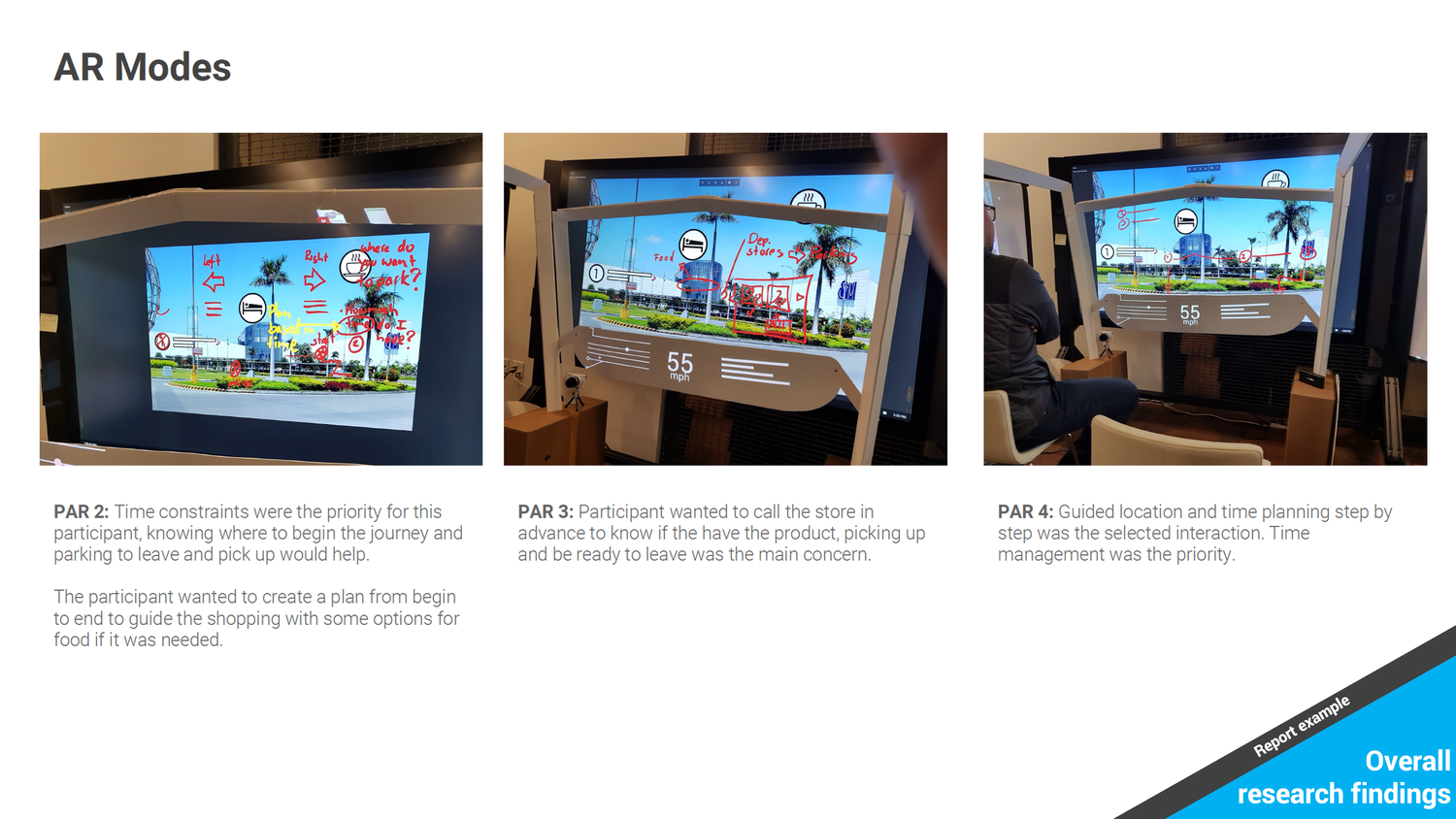
Mixed Methods Integration: Why Both Matter
Quantitative data showed which interaction design had statistical impact (personal/intimate reduced external regulation, p=.03)
Qualitative data explained why and how:
- Private spaces allowed longer-term thinking without peer pressure
- Some participants valued positive peer pressure from social conditions
- Voice authority in public conditions created control tensions
Methodological contribution: Demonstrated how interaction attributes can function as controlled independent variables to test behavioral theories—bridging design research and experimental psychology.
Strategic Impact
Industry Recognition
Fast Company World-Changing Ideas Award 2020 - Honorable Mention, Transportation Category
CES Presentation - Interactive visual journey demonstrating Harman's leadership in human-centered automotive innovation
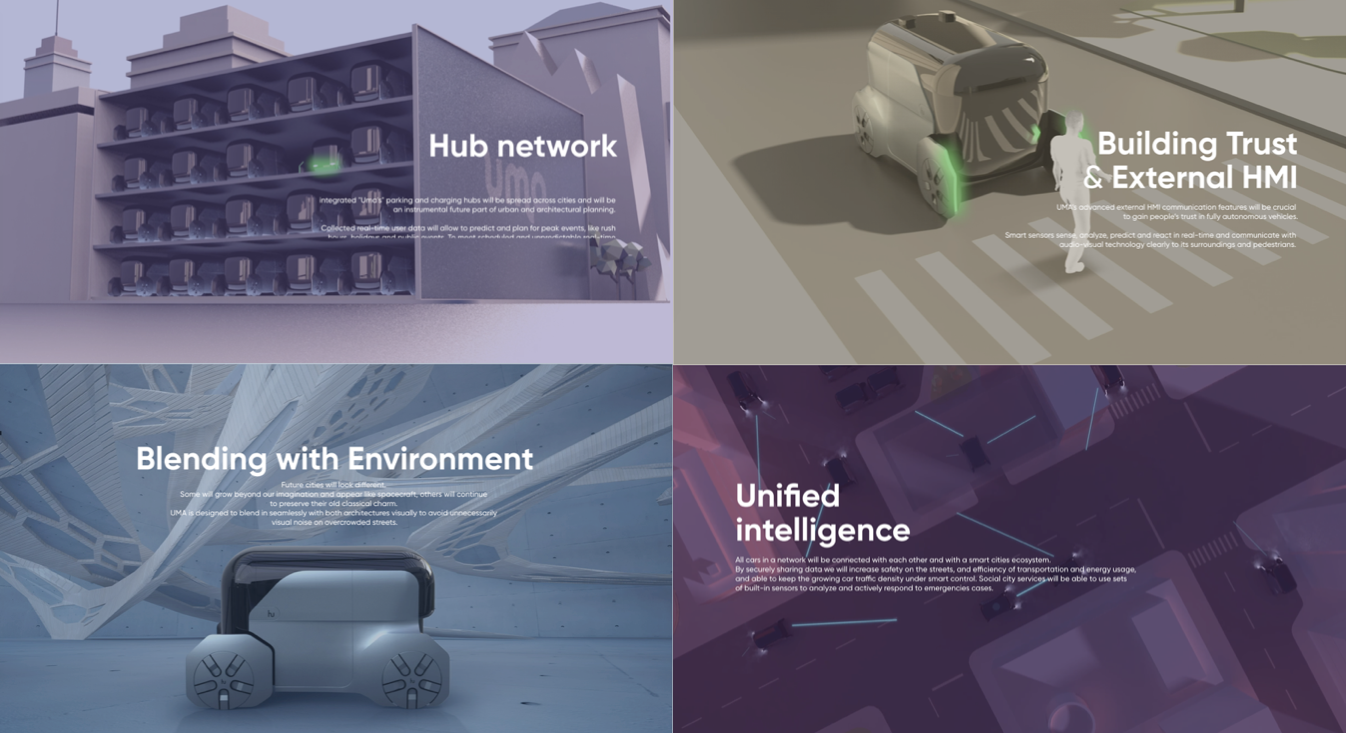
Academic Contribution (Doctoral Research)
Methodological Innovation: Proved low-fidelity prototypes can function in rigorous experimental designs with statistical validation
Theory-Driven Design: Demonstrated how validated behavioral models (Self-Determination Theory) can guide early design decisions with measurable outcomes
Proxemics Research: First study to experimentally manipulate spatial interaction design while measuring motivation quality
Key Learnings
1. Behavioral Provotypes Need Complex Scenarios
Simple tasks don't generate enough variance. The exercise commitment scenario provided sufficient complexity for meaningful distinctions.
2. Voice Interaction Complicates Group Authority
In shared vehicles without designated drivers, voice raises control questions—tone can reduce individual autonomy.
3. Mixed Methods Navigate Data Through Multiple Lenses
Quantitative scales guided qualitative analysis. High/low scorers in specific regulations revealed patterns invisible to single-method approaches.
Reflection: Bridging Disciplines
This project represents an uncommon convergence—participating in high-stakes industry innovation while conducting doctoral-level research, with full support from senior leadership in a Fortune 500 company.
But I also recognize that opportunities favor preparation. In that meeting with the VP, I had the chance to articulate a clear vision and then execute with both rigor and resourcefulness—building credibility through results.
My professional approach: I operate across disciplines to close gaps in understanding. Industrial design creativity meets doctoral research methods. Fine arts thinking meets scientific rigor. Industry velocity meets academic depth. This combination allows me to balance professional settings that are often artificially disconnected—when in reality, complex problems don't arrive with disciplinary labels.
The capability I offer: Moving fluidly between rapid qualitative insights for product iteration, rigorous quantitative validation when strategic decisions need statistical confidence, and mixed methods integration when neither tradition alone suffices.
This project succeeded not despite operating across boundaries, but because it refused to recognize those boundaries as fixed. Reality is interdisciplinary. Problems are interdisciplinary. Solutions should be too.
Bottom Line
Personal interaction design significantly reduces external regulation (p=.03), suggesting intimate/private interfaces better support autonomous motivation for long-term behavior change. However, designers must provide adjustable privacy controls rather than defaulting to single proxemic level, as some individuals benefit from positive peer pressure. The bridging contribution: proving that design researchers can manipulate interaction attributes as controlled variables to test behavioral theories—uniting design thinking with experimental rigor.
Links & Recognition
Industry Recognition:
Academic Publication:
- Rivera, J. (2023). Research Through Provocation: Theory-Driven Design Approach for Persuasive Technologies. Doctoral Dissertation, Illinois Institute of Technology.
This case study demonstrates the synergy possible when industry innovation and academic rigor pursue the same questions through complementary methods—built in a couple of weeks with no budget, executed with both creativity and scientific precision.





